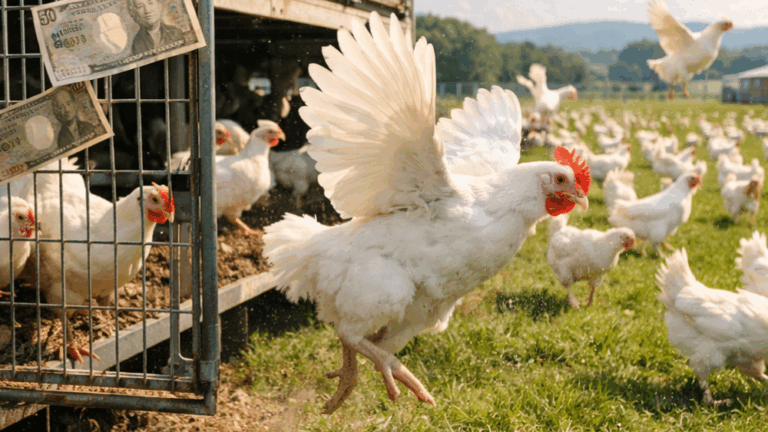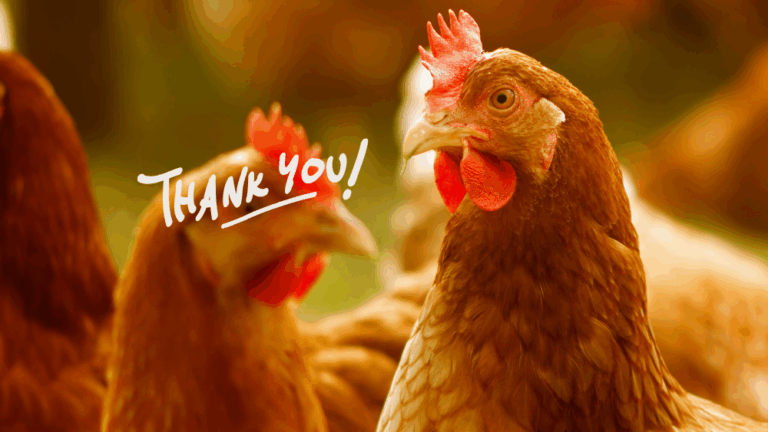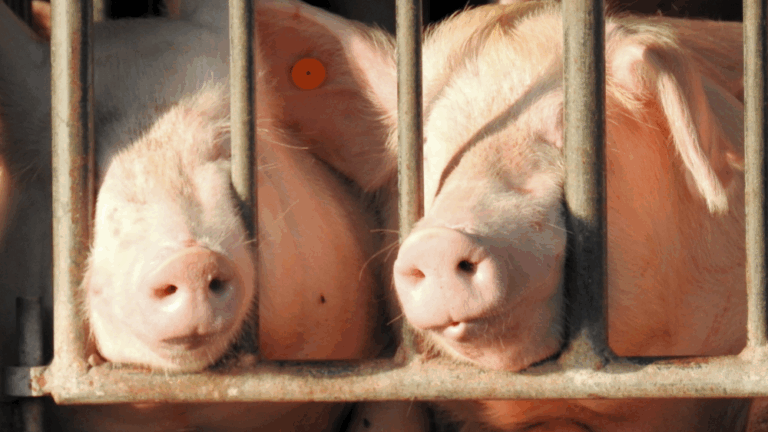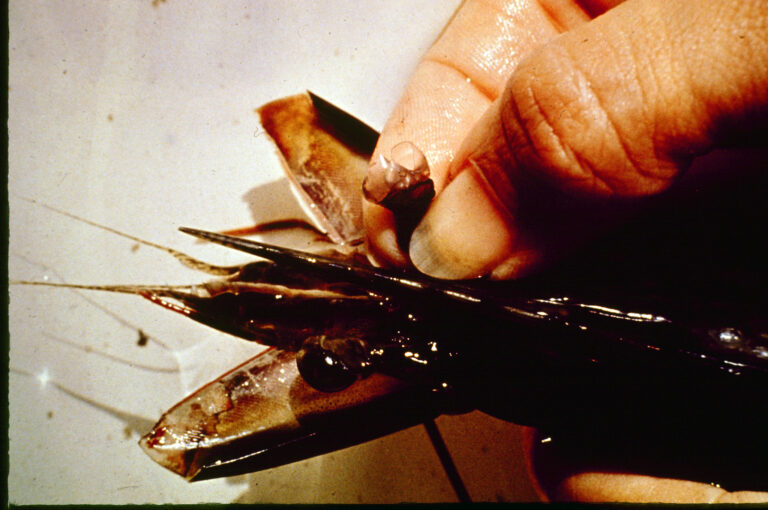The revision of the Act on Welfare and Management of Animals will take place soon.
We, the Animal Rights Center, JAVA, and PEACE, have been working together to make suggestions to improve the enforcement of the act for all animals.
What does it mean when we say “all” animals.
It includes animals to exhibit, animals to breed pets, animals that are kept as pets, animals used for experiments, animals that are considered to be dangerous, and animals for livestock, which tend to be overlooked and rarely discussed.
We have been demanding the improvement of law enforcement for livestock animals that are, legally speaking, industry animals. They suffer the most, and we strive to minimize violence to such animals.
Are Farm Animals Currently Protected?
Many think farm animals are not subject to the Act on Welfare and Management of Animals in the first place.
A lack of awareness was shown by vendors or administrators in a case in which the Animal Rights Center and police worked together to burn chickens alive in 2016.
On 22nd September 2016, we discovered that chickens were thrown into an incinerator alive, so we reported this to the police.
At the time when the live chickens were thrown into the incinerator, the fire was not lit. We presumed that they would incinerate it the next day since they did not lite the fire in the evening.
The police confronted the employer to confirm the situation. We took photographic evidence that live chickens were in the incinerator.
The police instructed the employer to fix the situation, which he denied and chased the police away. He, then, left the live chickens behind in the incinerator. It was assumed that these chickens were burned alive.When the administrators (the animal care center and the public health center in the region) went there to give instructions, he lied and claimed they had not burned chickens alive.
When the Animal Rights Center pursued to further instruct this employer, the farm public health center and the municipal division said they had no authority in terms of animal protection or animal welfare.
The police took one month to confirm the legality, and then gave further instruction by telling they can no longer hold onto the old practice.
It took 1.5 months for the employer to stop burning chickens alive.
Many farmers use inhuman ways to slaughter animals who are useless on a daily basis.
It was a coincidence that the Animal Rights Center discovered what was really going on because there were whistle-blowers, which is rather rare.
In other words, such practices hardly surface.
According to the whistle-blowers or anecdotes told by some farmers; animals are burnt, drowned, beaten to death, dropped from a high place, starve or weaken to death, passed onto rendering while being alive.
Again, this is not easy to detect for us and for the administrators; thus, it’s hard to stop. The law is not functioning.
Lack of Common sense
50.4% of cows cannot drink water at slaughterhouses. *1
The longest hours cows have to wait without drinking at slaughterhouses is 24 hours.*2
86.4% of pigs cannot drink water at slaughterhouses.
The longest hours pigs have to wait without drinking at slaughterhouses is 30 hours.
Many pigs coming to slaughterhouses weigh around 115kg, so they require about 11.5 litters of water. *3
Some research shows pigs who can’t drink for 8 hours are dehydrated and 0.92% of them die of thirst even if they get water the next day and 4.6% of pigs get sick. The longer the time without water the worse the symptoms get since salinity gets more concentrated.*4
If there is no water access for 24 hours, pigs likely get salt poisoning.
Their heads get shaky, their mouths get bubbly, they have a hard time standing or walking, they fall unconscious and their ears get pale.
Some observe brain necrosis when they perform an autopsy after pigs die.
Giving access to water as part of animal welfare is common sense, which is lacking.
It violates the OIE Animal Health Code.
Isn’t it also a violation of the Animal Welfare Law?
However, the Animal Welfare Law is not functioning.
No sign for improvement
Egg laying hens are treated like garbage. They are confined in crowded containers for long hours and abandoned in urine and feces.
In March 2018, the Ministry of Agriculture, Forestry and Fisheries and the Ministry of Health, Labor, and Welfare issued a notice to improve the current situation for the first time.
It’s been 7 months as of Nov 5th 2018, but there is no sign of improvement.
Every time we investigate, we always observe long hours of abandonment.
The old way of slaughtering
Many chicken slaughterhouses don’t knock birds unconscious.
Mutilating animals to rapidly bleed out to death makes it painful since nociceptors, which responds to tissue damage, are sharply activated.
Endogenous opioid peptides are usually not produced while being slaughtered.
As a result, there is a high possibility for animals to feel agonizing pain when their throats are cut.
While animals whose throats are cut are conscious, they are able to feel apprehension, pain, agony, and other sufferings, which is a problem in light of animal welfare.
ーEFSA “WELFARE ASPECTS OF ANIMAL STUNNING AND KILLING METHODS”It takes about 60 seconds to cut two arteries, 122 seconds for one artery, 185 seconds for two external jugular veins, and 233 seconds for external bradycardia.
ーGregory and Wotton, 1986The method to slaughtering by cutting arteries prolongs time to death.
– British National Agriculture and Food Research Organization (Current Biotechnology and Biological Sciences Research Council) in 1984
The current Act on Welfare and Management of Animals states that in a case where an animal must be destroyed, a method that minimizes as much as possible the pain and distress to the animal shall be used in Article 40.
This inappropriate situation where there is no consideration to mitigate the pain has continued and there is no sign that this practice is changing at all.
Cruel methods that have been lasting so long
66% of farmers practice forced-molting. 80.6% of them practice “no food” and 5% practice “no food or water.”
The forced-molting results in a certain number of hens to die, which is caused by debility or starvation. This violates the Act on Welfare and Management of Animals.
It is a problem some farmers cut out water as well. It is problematic that this practice is still underway when there is an alternative.
It is baffling that there is no action taken by the administration to improve the situation.
This cruel method has lasted so long even though there is an alternative, and some farmers indeed have moved on.
We need a law that is enforceable.
Summary of the Challenges
- Agriculture business and slaughterhouses are not conscious about following the law.
- Violent practice is so common.
- It’s hard to find out when animal abuse occurs.
- The government offices do not instruct relevant parties through the Act on Welfare and Management of Animals or animal welfare even when violence is discovered.
We wish the Act would change in this way
- Include agriculture, transporters, and slaughterhouses in the “Animal Handling Business.”
- Add a clause about industry animals to the Act on Welfare and Management of Animals.
- Stipulate a method to slaughter animals without pain per the international standards.
- Include “farm hygiene service centers, “meat hygiene inspection centers,” and “local administrative organ that handles agriculture” in the relevant organizations.
What about the administration?
It may sound odd to care about the administration when we are talking about the Act on Welfare and Management of Animals, which is a matter of legislation by diet members.
However, it is important to understand the administration because they are required to operate according to the law so the law should be more practical.
The Ministry of Agriculture, Forestry, and Fisheries, is willing to collaborate in regards to the act. They’ve already given a notice about this matter to all prefectures.
They also communicate the guidance on raising and managing animals based on animal welfare.
They’ve shown a stricter attitude against vendors who practice abuse.
On the other hand, the Ministry of Health, Labor, and Welfare who is response for slaughterhouses and chicken processing factories is not engaging by stating animal welfare issues are a matter of the Ministry of Environment just like the statement made by the Minister previously.
It appears to be irrational and even pure denial when it is clear that animal welfare administrators in each prefecture can’t go into slaughterhouses or chicken processing factories.
There are always staff members from the Meat Inspection Center at slaughterhouses on site, so it’s not too much to ask that these staff members give instructions when they witness abuse. It should be a part of their duty because they wouldn’t stop the abuse as a civilian.
So we’re only asking to add the Meat Inspection Center to “the relevant organizations.”
If there is common sense, it is hard to keep witnessing the weak getting abused all the time.
There have been some people who could not turn their back as shown in a case like this.
Sankei Shinbun in Tochigi July 6th 2010
A cow died from suffocation being hanged.
The Tochigi Prefecture police and Ootawara police arrested a 35-year-old man for violation of the Act on Welfare and Management of Animals on July 5th. He was a collector from Isezaki city from Gunma, and originally charged with a violation of the Food Sanitation Act.
He admitted the charges.
According to the prefecture police, the suspect put a wire on the front legs of a cow and hanged to suffocate it to death.
This method takes about 20 minutes for cows to die. The police judged this as abuse.
Earlier, the suspect had been arrested for a violation against the Food Sanitation Act for having taken organs of cows who did not pass inspection due to a disease in May.
Do these people feel helpless facing the pain of animals?
Abolishing animal abuse at farms and slaughterhouses is for animals AND humans.
Who would feel inconvenienced? If there is any, it’s people who want to abuse.
We wish more aggressive measurements to prevent animal abuse.
Seika K
*1 Ratio of placement of drinking facility: Meat Hygiene Inspection Center 2011
*2 Drinking time: Investigation by the Animal Rights Center
*3 https://porkcdn.s3.amazonaws.com/sites/all/files/documents/Youth/dehydration.pdf
*4 https://vet.uga.edu/ivcvm/courses/afip/conf06/wsc20/c02.htm












